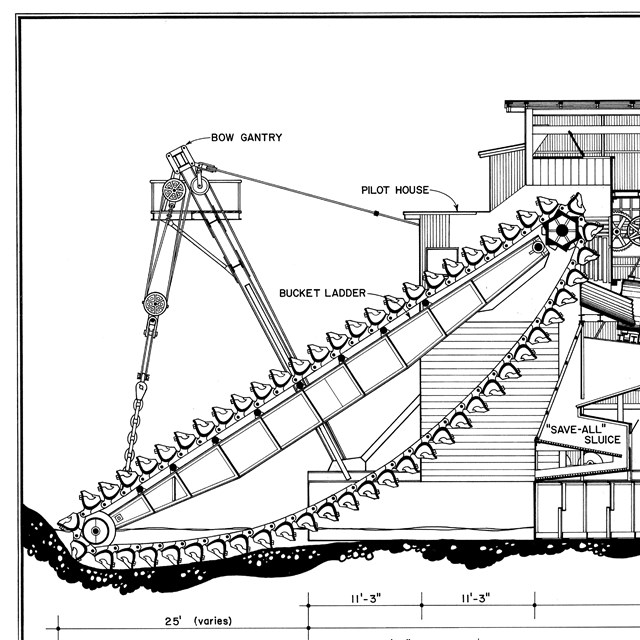Last updated: May 23, 2025
Article
Yukon Mining Sites Virtual Tours
Gold mining is an important part of the history of the upper Yukon River region in Alaska and Canada. Along the Yukon River corridor, evidence of historical gold mining activity is lightly scattered across the landscape. The Gold Placers Incorporated camp is one of several mining camps in the area. It contains many important cultural and historical resources, including camp buildings, the gold dredge, tailings piles, earth-moving equipment, a historic roadhouse, and assorted artifacts.
Because mining machines were costly or difficult to move, they were usually left in place when a mine was abandoned, and because they are largely built of metal parts, they survive intact almost indefinitely. Most of the machines served three purposes: finding gold, melting permafrost, or moving earth and supplies. Therefore, the story of these machines is the story of placer gold mining, beginning in the 1890s with the first major gold strikes and stretching to the present-day. Visitors to the region are more likely to see mining machinery than any other type of historical material.
Three of sites featured in the virtual tours below (Coal Creek Dredge, Hillman Drill, and Cheese Creek Blacksmith Shop) are part of the Gold Placers Incorporated mining camp.
Project Information
Heritage Documentation Programs (HDP) undertook Historic American Engineering Record (HAER) documentation of mining sites in Yukon-Charley Rivers National Preserve in 2014 and 2016. HAER architect Todd A. Croteau took the panoramic and large-format photographs. HDP architect Ryan Pierce produced the virtual tours. The virtual tours offer an alternative means of experiencing these unique resources, since these sites are in remote locations not easily accessible.
Update: As of May 2025, the virtual tours are no longer supported on nps.gov. We apologize for any inconvenience.
-
 HABS and HAER Documentation
HABS and HAER DocumentationArchival documentation at the Library of Congress
-
 Virtual Tour
Virtual TourPanoramic tour of Coal Creek Dredge
-
 Virtual Tour
Virtual TourPanoramic tour of the Hillman Drilling Rig
-
 Virtual Tour
Virtual TourPanoramic tour of the Cheese Creek Blacksmith Shop
-
 Virtual Tour
Virtual TourPanoramic tour of Ben Creek Mine
